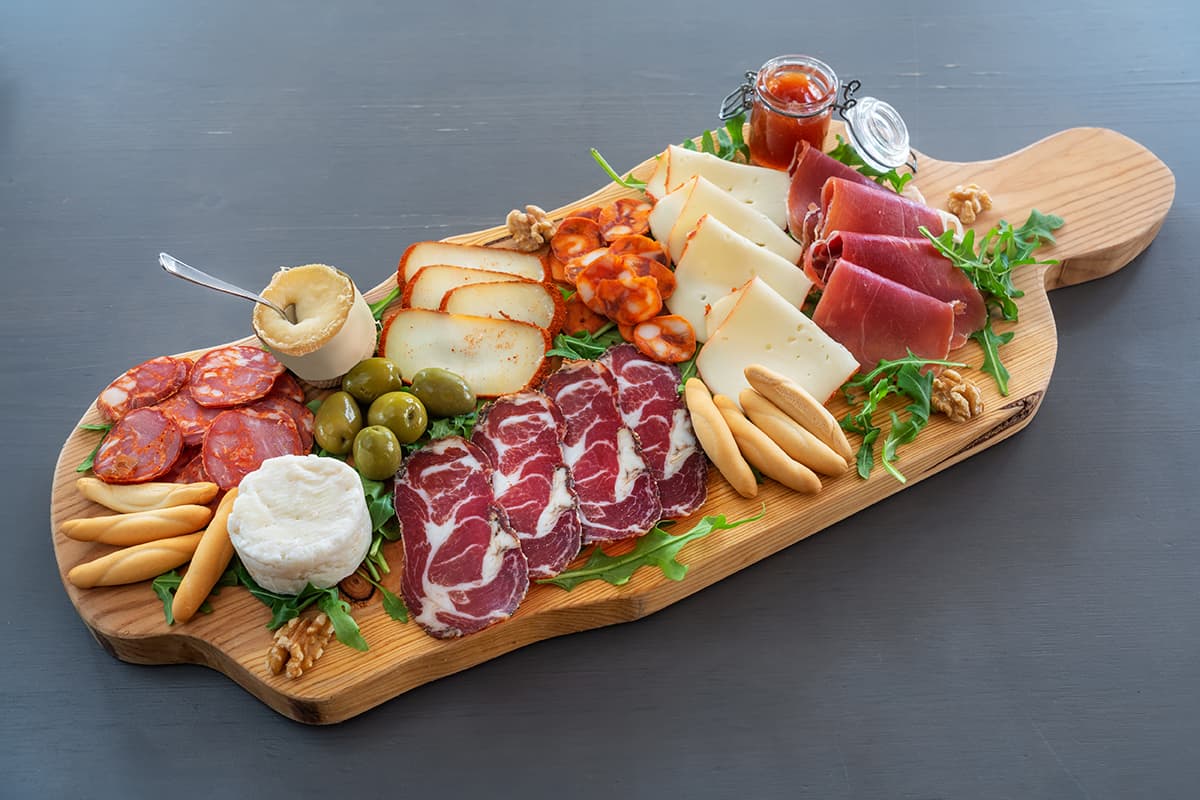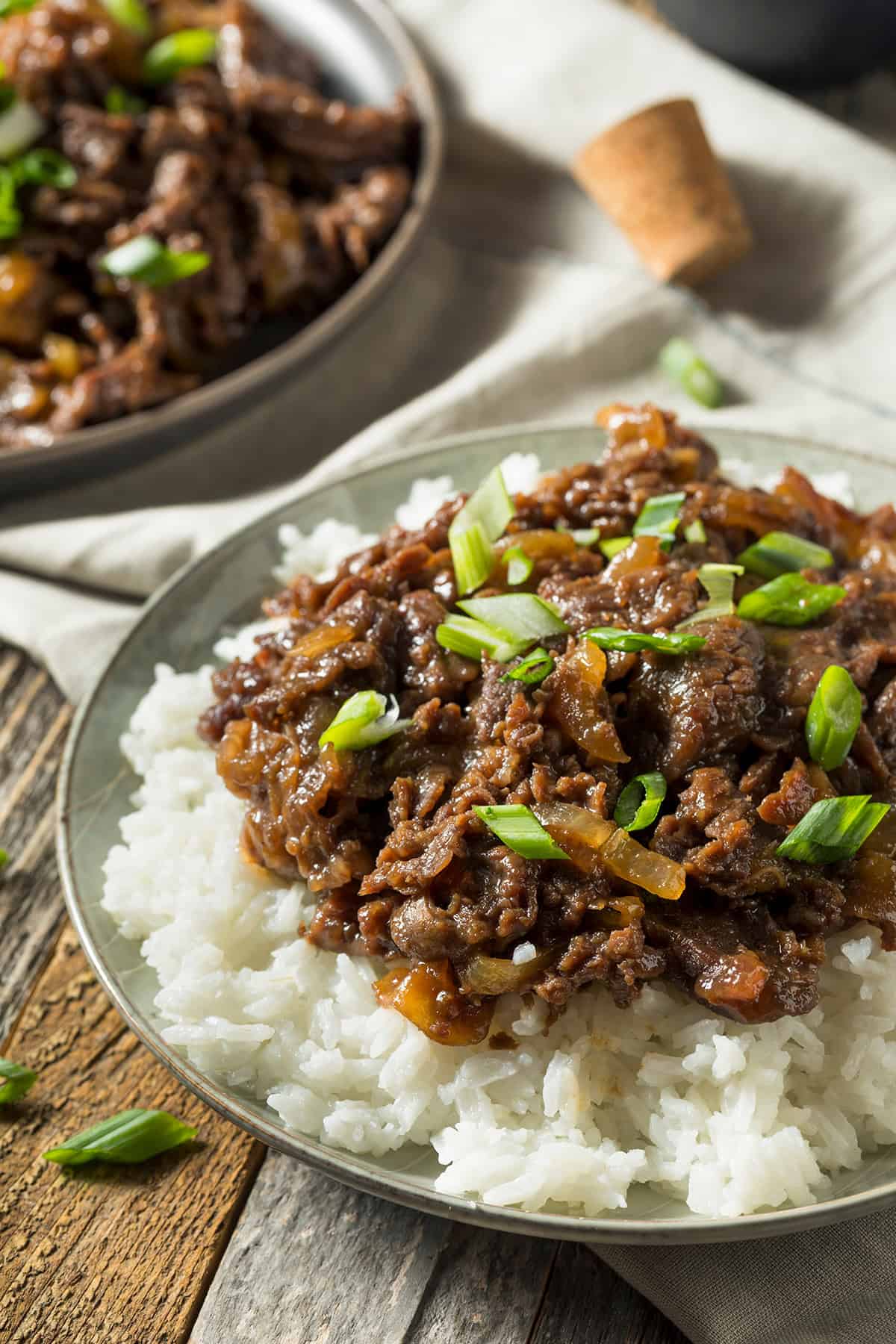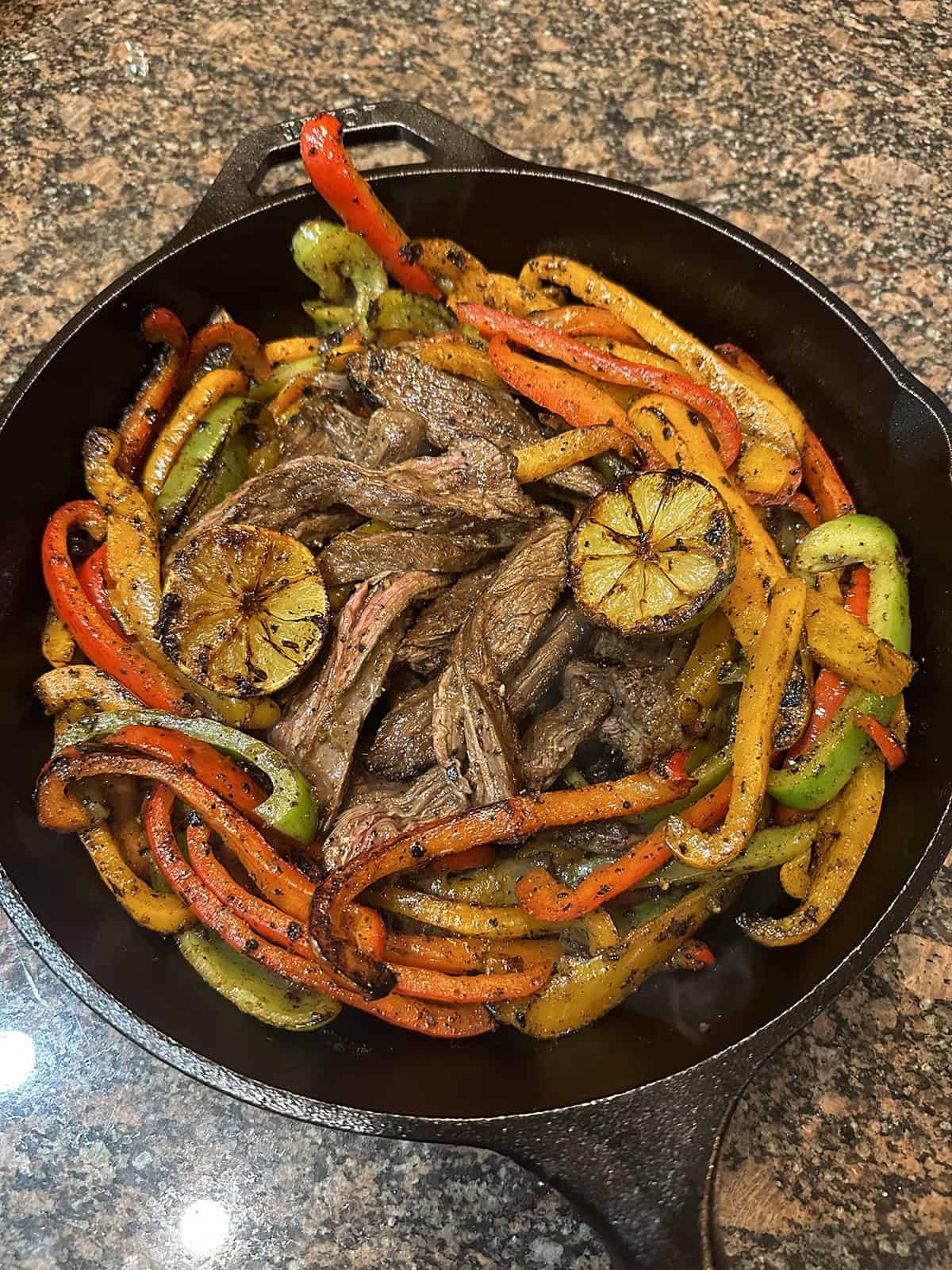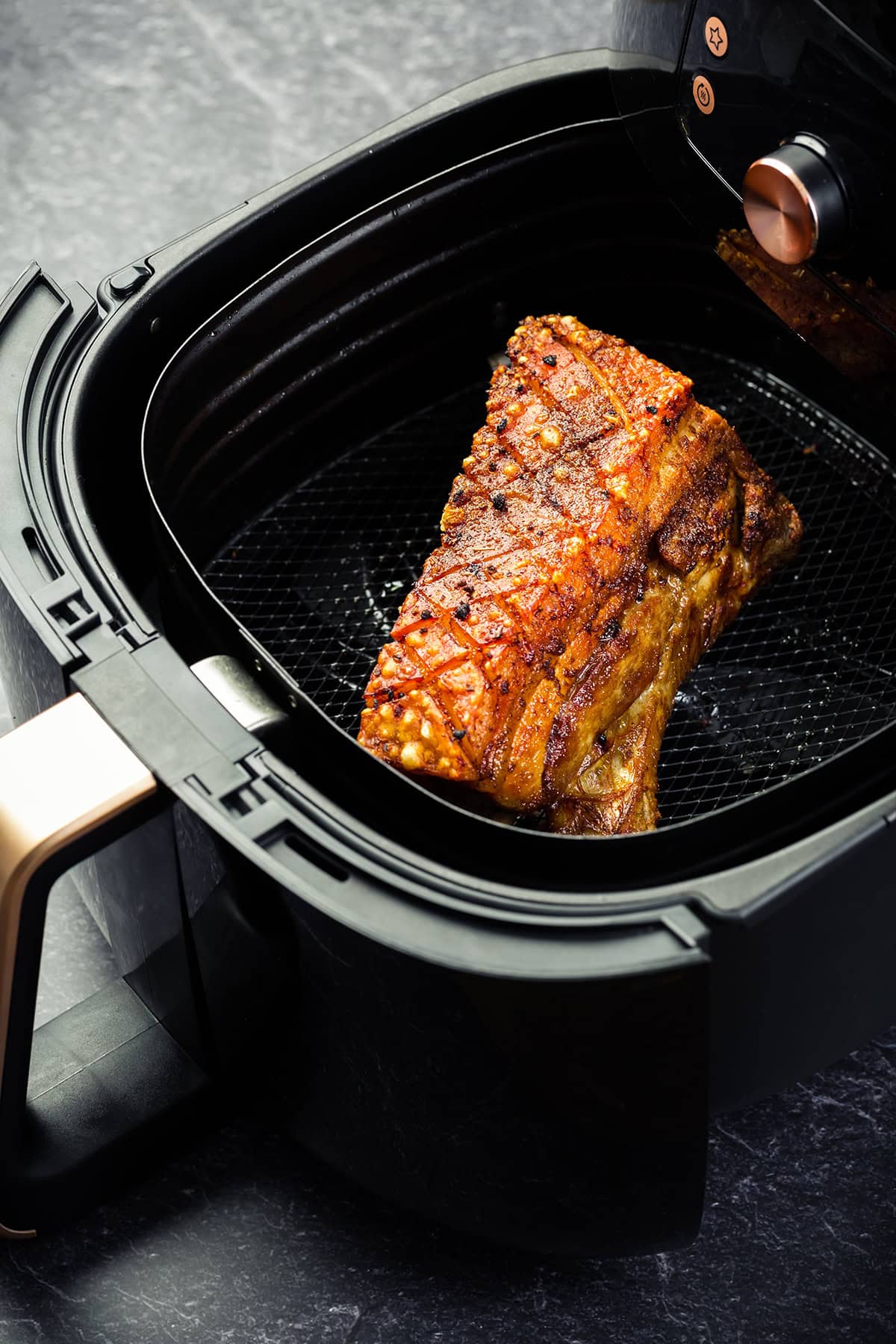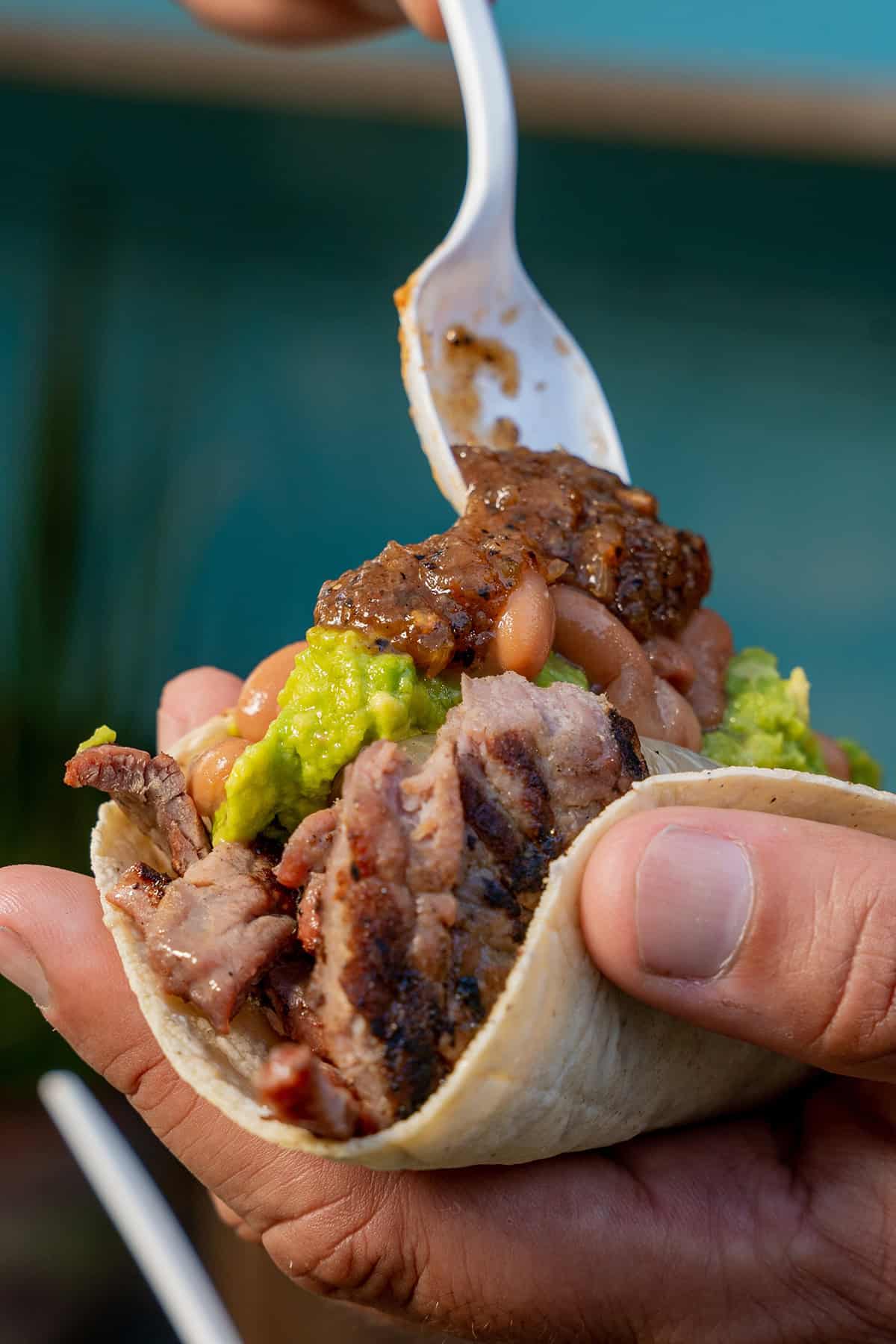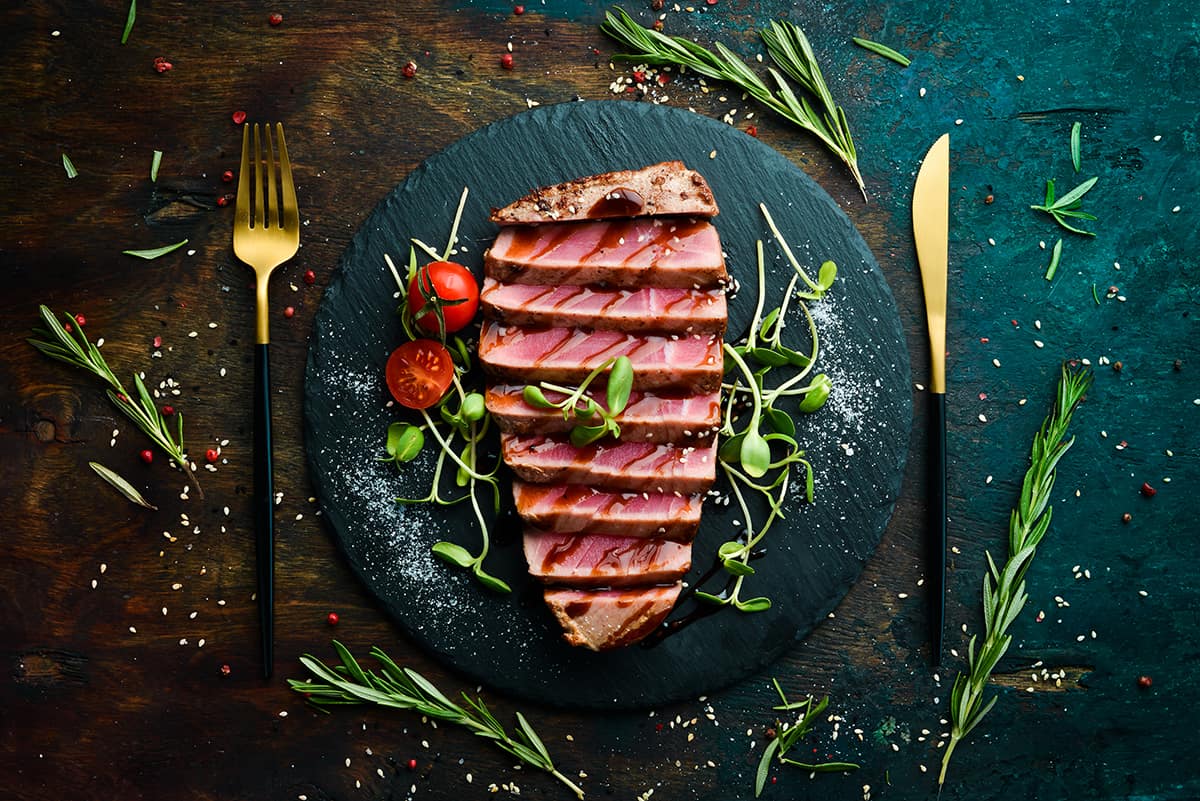A charcuterie board is a board of food that is typically served in restaurants or at dinner parties. The word ‘charcuterie’ is a French term that literally translates to mean ‘pork butcher products’, and it is believed to date back to the 15th century.
Original charcuterie boards would have been a platter of cold meats such as various types of hams, however the charcuterie board as we know it has evolved to encompass a range of different cold food products.
Commonly, a charcuterie board will feature not just cold meats, but also cheeses, pâtés, olives, fruits, and bread or crackers.
Here we’ll discover cover the most common types or themes of charcuterie boards, how to choose the right one and what to put on a charcuterie board.
Types of Charcuterie Board
Meat Board
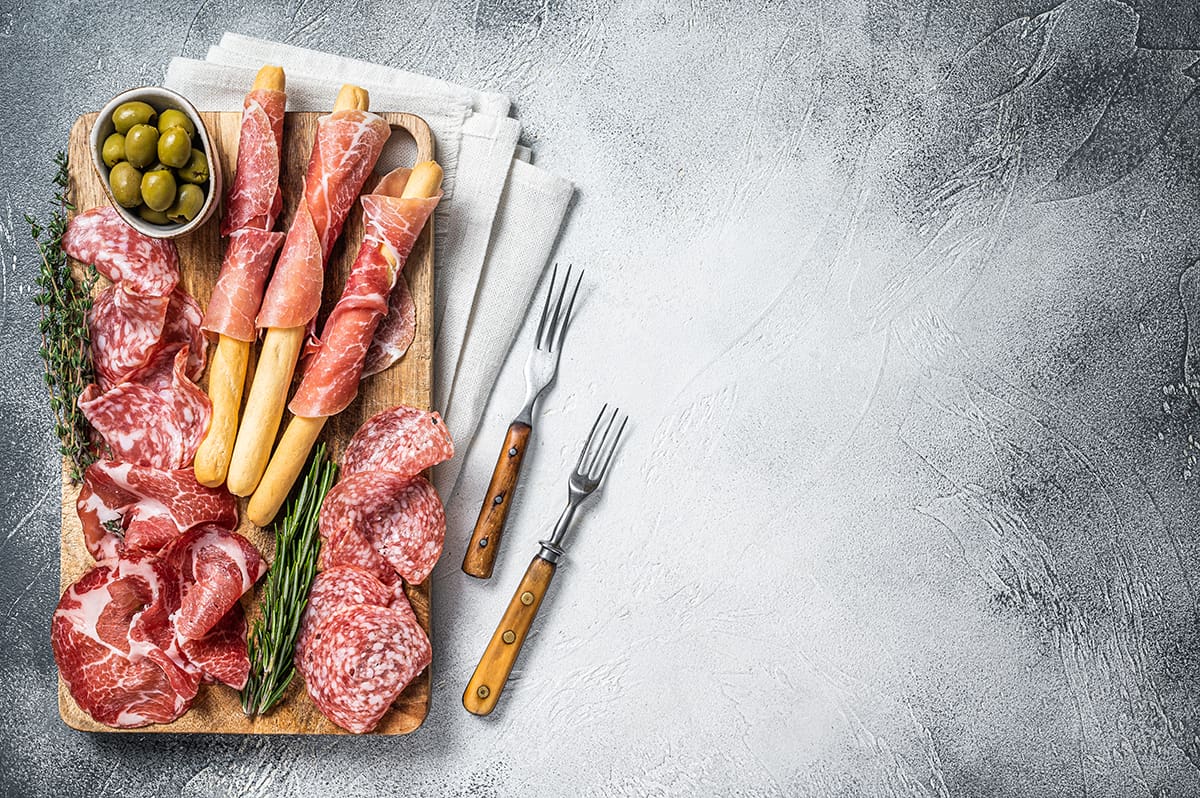
Charcuterie boards started out as cold meat boards, where a variety of different hams would be displayed on a board and served together. This type of charcuterie board is still very popular today, hundreds of years after the charcuterie board was invented.
A meat-themed charcuterie board should include an array of different cold meats, such as salami, prosciutto, parma ham, mortadella, and you could even add fish to the board, such as slices of smoked salmon, or a pot of shrimp. Display the meats in an appealing way by layering them on top of each other or rolling them up alongside each other.
You could create a second charcuterie board alongside the meat board with foods that complement the cold meats, such as a breadboard or a cheese board.
Cheese Board

Cheese charcuterie boards are very versatile, and can be offered instead of a starter at a dinner party, as part of the main course, or even as dessert if you serve the cheese alongside grapes and sweet chutneys. The key to a good cheese charcuterie board is variety. You should include some hard cheeses, soft cheeses, and some specialty or novelty cheeses.
A themed cheese board also works well, for example, a French cheese board with all cheeses which are a product of France, or an Italian-themed cheese board with Italian cheeses. Popular cheeses for a cheese charcuterie board include brie, camembert, cheddar, gouda, manchego, and blue cheese.
Flavored cheeses are especially popular around the festive period, such as cranberry cheese, apricot cheese, or garlic cheese. A cheese board should always be set alongside a board of bread or crackers so that guests can pair the items together, or you can add crackers to the cheese board itself.
Fruit Board
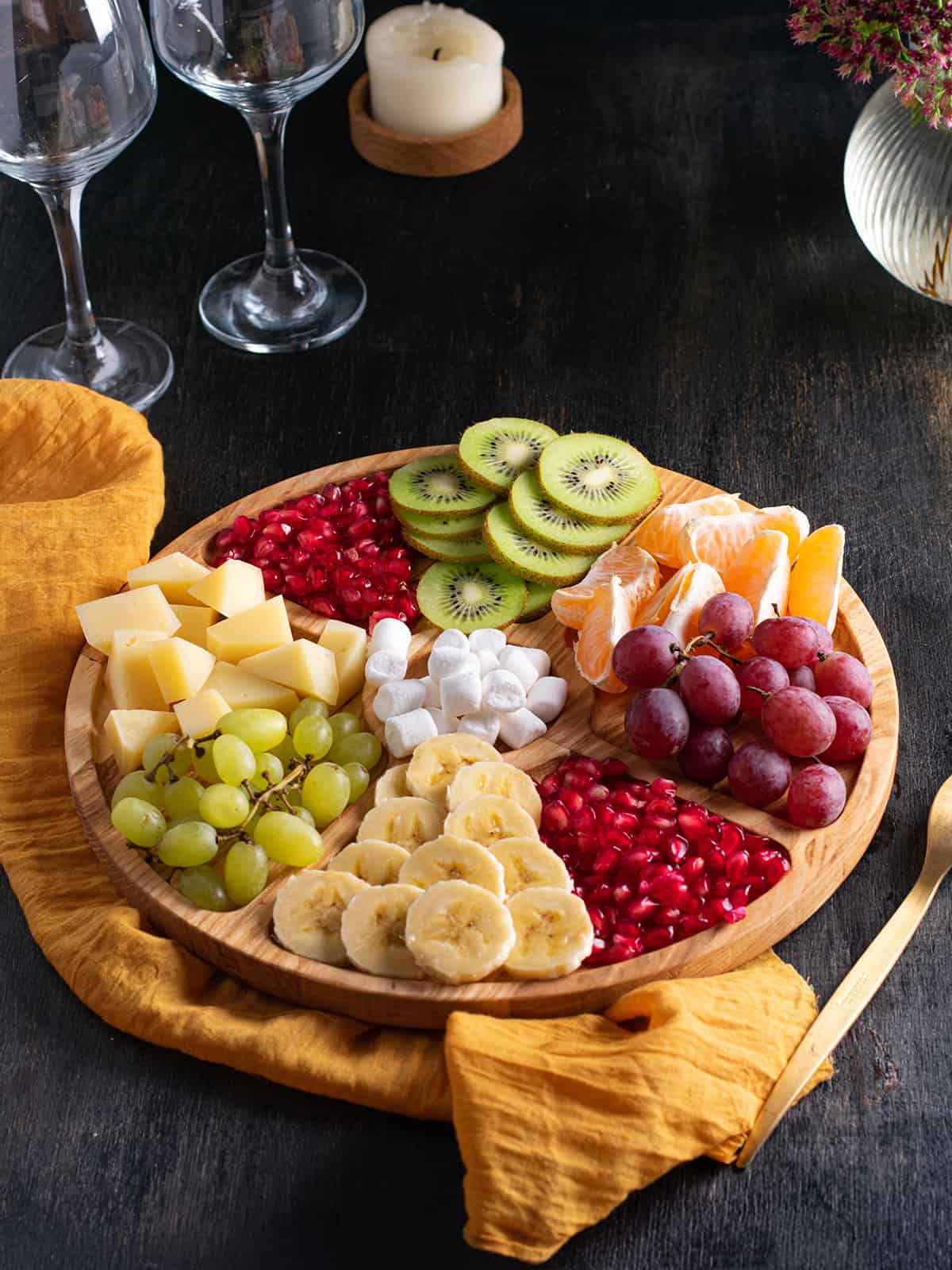
A fruit charcuterie board can be served for dessert, or you can add fruits to an existing savory charcuterie board for extra variety and flavor. On a dessert charcuterie board, fresh fruit works best. This could be strawberries, raspberries, blueberries, and blackberries, or chopped up slices of pears, apples, pineapple, or melon.
To turn a healthy fruit dessert charcuterie into something a little more extravagant, add a ramekin of chocolate or toffee sauce that guests can dip their fruit into. If you are adding fruit to a savory charcuterie board, then fruits such as grapes, apples, and pears work well alongside cheeses or add dried fruits to a meat or cheese platter such as dried cranberries, dried apricots, or dried figs.
Mixed Board
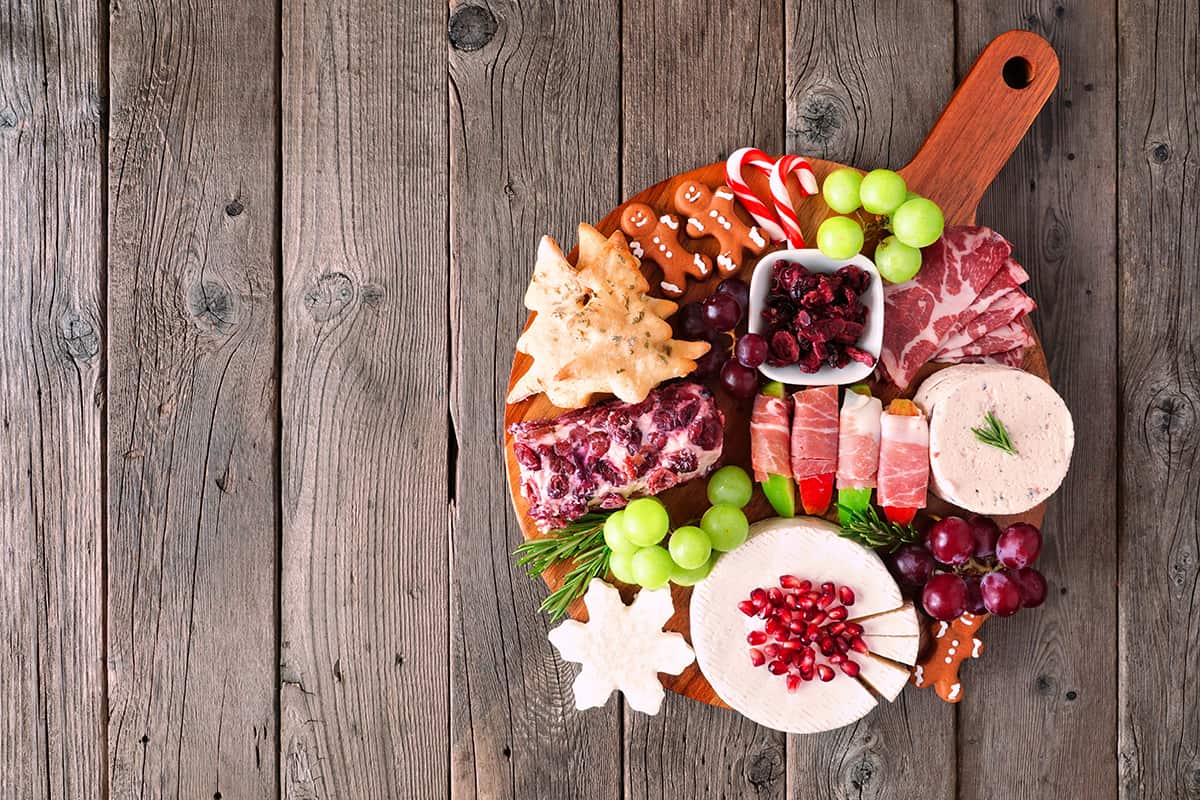
A mixed charcuterie board is one of the most popular charcuterie boards because they are the easiest to prepare, they look great, and they offer something for everyone. On a mixed charcuterie board, including a selection of meats, cheeses, fruits, pâtés, crackers, breadsticks, and vegetables such as carrot sticks, cucumber sticks, and olives.
There are a number of ways you can set this out, either by segmenting the board into sections, for example one quarter of the board for cheese, one quarter for meat, and so on, or you can mix up the display to spread out the color.
Choosing a Charcuterie Board
The type of board you use to serve your charcuterie platter on could be a board designed specifically for this purpose, or you could use a chopping board, or another plate or serving dish you have in the kitchen. Wooden chopping boards or glass chopping boards will double up nicely as charcuterie boards, or you could make your own charcuterie board from slate or marble tile.
There are also a wide variety of charcuterie boards available on the market in various designs which you can match to your home decor style, and your practical needs.
Size
The size of a charcuterie board is important, because if it is too small then it isn’t going to fit enough produce on it to feed your guests, and if it is too big then it is going to look empty when you set out your food on it. If you are buying a charcuterie board for a specific event then consider the number of people you are feeding and how pivotal the charcuterie board is in the meal.
For any more than four guests, your board should be at least 20 inches in length, and for more than eight guests it would be better to use several large charcuterie boards. For smaller parties, such as for two people, use a charcuterie board measuring around 12 inches long.
Shape
The shape of a charcuterie board is more about personal preference and style than it is about practicality, though there are some practical points to consider. Rectangular or square charcuterie boards are most popular because it tends to be easier to arrange food on these, and they will fit more easily alongside each other when set out on a dining table or buffet.
Round charcuterie boards can look stylish if you are not short on space, and other shapes such as ovals or freeform shapes can add a quirky and modern look to a dinner party. For special occasions, you could also look at novelty shapes, such as a heart-shaped charcuterie board for Valentine’s Day, or a tree-shaped charcuterie board on Christmas Day.
Material
Charcuterie boards are traditionally made from wood or slate, and these are great if you want a rustic feel at your event. The downside of wooden and slate boards for charcuterie is that they can be quite heavy, so for a lightweight option you could consider melamine. Glass charcuterie boards are also a nice contemporary option, and these are especially easy to clean and won’t harbor any bacteria.
What to Put on a Charcuterie Board
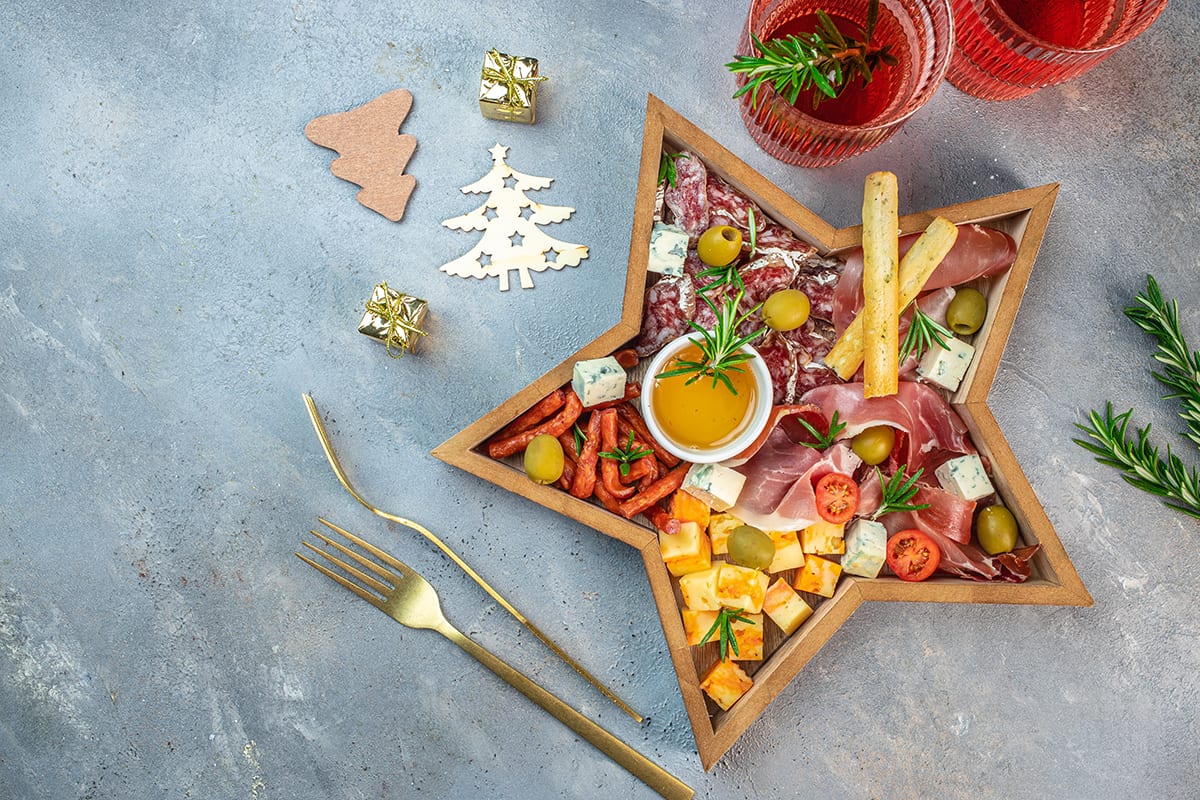
Preserves
Preserves and chutneys are welcome ingredients on a charcuterie board, especially if bread or crackers are present. These can be decanted into ramekins and set on the charcuterie board alongside meats and cheeses, or you can use the jars they were purchased in so that guests can read the label to find out what’s inside.
Onion chutneys and tomato chutneys are excellent choices for a meat and cheese savory board, or if you are creating a dessert cheese charcuterie board, then sweet chutneys such as cranberry chutney, plum jam, and quince jelly will be a pleasant choice.
Fruits
You can put almost any fruit you can think of on a charcuterie board, though remember that some fruits can turn bad quickly after they have been sliced, so these should be prepared right before you intend to serve. To prevent apple slices from going brown, spritz them with a little lemon juice before serving, and they will last for hours on a charcuterie board.
Common fruits added to charcuterie boards include fresh grapes, berries, apples, pears, oranges, melons, and pineapples. Dried fruits are also a nice addition to a mixed charcuterie board, such as dates, dried figs, and dried apricots.
Crudités
Crudités are a type of appetizer that also have their roots firmly placed in French gastronomy. These are sticks of raw vegetables, such as carrot, celery, pepper, and cucumber, which can be eaten alone or dipped in a sauce. You can add crudités to any charcuterie board to add color and increase the likelihood of your guests all being able to find something they will enjoy eating.
Meats
Meats are the original ingredient on a charcuterie board. You can use any cold cuts you can think of, including pastrami, salami, mortadella, prosciutto, and luncheon meats such as sliced chicken, turkey, and ham.
Cheeses
Cheese works well on any charcuterie board since it pairs well with cold cuts or meat, bread, crackers, preserves, fruits, pâtés, and vegetables. Serve cheese in blocks, with a cheese knife also on the board to allow guests to cut themselves off their preferred amount of cheese, or prepare your cheese in slices.
Pâtés
Pâtés can be homemade or store bought, and served in ramekins or jars. They work well as an alternative meat source on meat charcuterie boards, but they also pair brilliantly with cheeses and bread.
Bread
Bread is a vehicle on which guests can enjoy the other elements of a charcuterie board, for example, they might spread soft cheese on bread, dip a breadstick in pate, or enjoy some salami on a cracker. Slice up a baguette for the charcuterie board, or lay out a variety of crackers.
